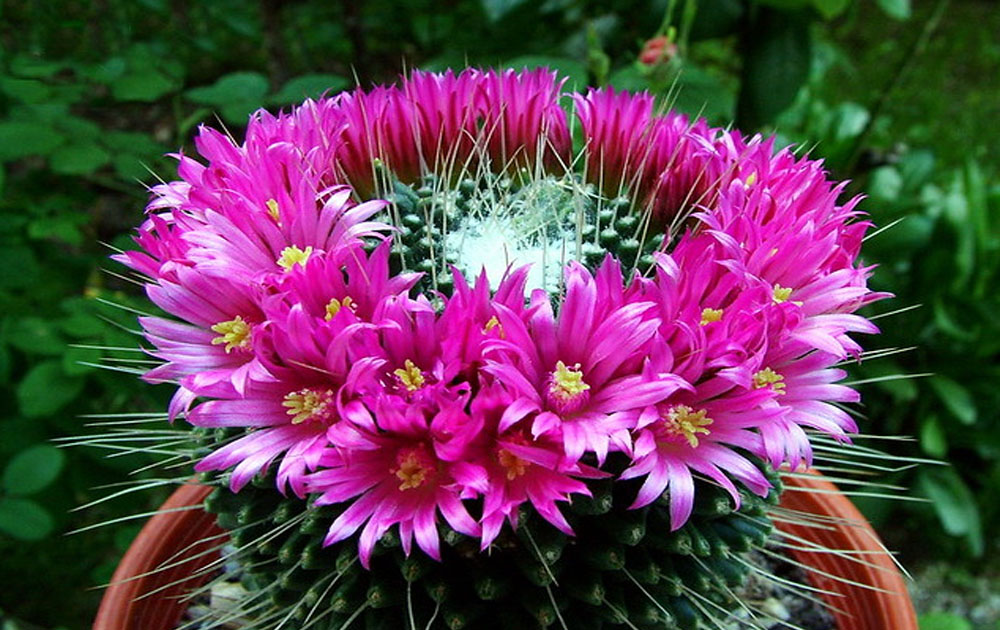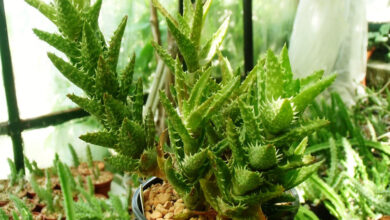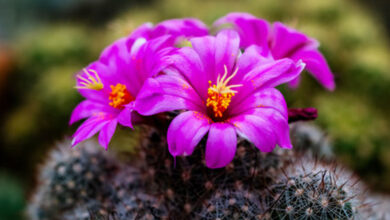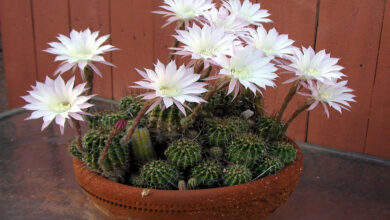Mammillaria spinosissima pink flower spiky cactus

Mammillaria spinosissima is a genus of spiky cactus native to Central America’s arid areas, mainly Mexico. Plants often grow funnel-shaped blooms and create clusters of spherical or columnar stems.
The flowers and spines of Mammillaria spinosissima are in a bright pink hue. The center spines are either reddish-brown or yellow in color. Grow in full sun in pots with cactus compost for optimal results. Water only from mid-spring through summer, and feed once a month with a cactus fertilizer.
Mammillaria spinosissima is best cultivated as a houseplant, although in July, pots can be transferred to a sunny, shaded patio.
How to cultivate Mammillaria Spinosissima
Mammillaria spinosissima is widely grown in indoor, and outdoor plant nurseries & private collections all over the world. In this article, an ultimate guide about Mammillaria Spinosissima is shared with you to facilitate you.
Propagation
Crested plants can be unexpected, producing both normal and mutant growth in various areas of the same plant. Offspring, whether sexual or asexual, are not always loyal to the parent plant. Take a slice of aberrant growth if you want to propagate a crested cactus. For best results, graft it onto a regular cactus.

Mammillaria spinosissima Flowering
- Purplish or deep-pink flowers in a ring form at the apex, 12-20 mm long, 15 mm in diameter; inner perianth-segments sharp; purple filaments considerably shorter than the perianth-segments. The plant is self-fertile.
- These plants normally blossom in mid-spring, forming a “crown” of pink flowers around the plant’s growing point.
- Water your Mammillaria spinosissima crested on a regular basis during the spring and summer, reducing back on water during the fall, and suspending water totally over the winter to stimulate blooming. Make sure your cactus gets enough sunlight because it needs it to blossom.
Fertilization
Fertilization with this plant is often unnecessary. If you want to freshen your soil or give the plant a boost during the growing season, feed it regularly with a cactus and succulent fertilizer. Fertilize only in the spring and summer, when the plant is actively developing.
Light requirements
These cacti require a lot of sunlight, at least five hours every day. A south-facing window is great indoors. Place them outside at a location where they will receive lots of sunlight. If you are growing this plant outside, be sure to give it some light shade to shield it from the hot afternoon sun.
Water requirements
Mammillaria spinosissima like to be dry. Water them only after the earth has completely dried out in the summer. Always err on the side of caution when it comes to watering. They are designed to resist drought, and one of the easiest ways to destroy them is to overwater them.
Watering should be reduced to a minimum throughout the winter. This will promote blossoming in the spring!
Soil requirements
These plants demand a coarse, well-draining soil mix. To increase drainage and soil texture, add up to 50% sand or fine pumice to ordinary potting soil.
Humidity / Temperature
High temperatures & low humidity are ideal for Mammillaria spinosissima. Temperatures over 70 degrees Fahrenheit are ideal. When nighttime temperatures dip below 50 degrees Fahrenheit, bring these plants indoors.
Common issues of Mammillaria spinosissima
These plants are not very prone to pests or diseases. Keep a watch out for pests that typically afflict houseplants, such as scale and mealybugs. Keep an eye out for any odd spots that might indicate an infection.
You may use diluted neem oil to treat afflicted plants. If a plant is infested with a fungus or a bacterial disease, cut away any diseased sections of the plant.
Maintenance
These plants take little care to be happy. Repotted plants should only need to be repotted every two to three years. Choose a pot that is at least two to three inches bigger in diameter than the plant to allow it plenty of room to grow.
Blue torch cactus care tips for easy propagation are also a good suggestion for those who love to grow cacti in their home.




